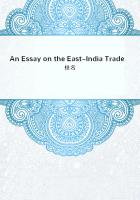"Open ALL the communication which nature has afforded," he wrote Henry Lee, "between the Atlantic States and the Western territory, and encourage the use of them to the utmost...and sure I am there is no other tie by which they will long form a link in the chain of Federal Union."Crude as were the material methods by which Washington hoped to accomplish this end, in spirit he saw the very America that we know today; and he marked out accurately the actual pathways of inland commerce that have played their part in the ****** of America.Taking the city of Detroit as the key position, commercially, he traced the main lines of internal trade.He foresaw New York improving her natural line of communication by way of the Mohawk and the Niagara frontier on Lake Erie--the present line of the Erie Canal and the New York Central Railway.
For Pennsylvania, he pointed out the importance of linking the Schuylkill and the Susquehanna and of opening the two avenues westward to Pittsburgh and to Lake Erie.In general, he thus forecast the Pennsylvania Canal and the Pennsylvania and the Erie railways.For Maryland and Virginia he indicated the Potomac route as the nearest for all the trade of the Ohio Valley, with the route by way of the James and the Great Kanawha as an alternative for the settlements on the lower Ohio.His vision here was realized in a later day by the Potomac and the Chesapeake and Ohio Canal, the Cumberland Road, the Baltimore and Ohio Railway, and by the James-Kanawha Turnpike and the Chesapeake and Ohio Railway.
Washington's general conclusions are stated in a summary at the end of his Journal, which was reproduced in his classic letter to Harrison, written in 1784.His first point is that every State which had water routes reaching westward could enhance the value of its lands, increase its commerce, and quiet the democratic turbulence of its shut-in pioneer communities by the improvement of its river transportation.Taking Pennsylvania as a specific example, he declared that "there are one hundred thousand souls West of the Laurel Hill, who are groaning under the inconveniences of a long land transportation....If this cannot be made easy for them to Philadelphia...they will seek a mart elsewhere....An opposition on the part of [that]
government...would ultimately bring on a separation between its Eastern and Western settlements; towards which there is not wanting a disposition at this moment in that part of it beyond the mountains."Washington's second proposal was the achievement of a new and lasting conquest of the West by binding it to the seaboard with chains of commerce.He thus states his point: "No well informed mind need be told that the flanks and rear of the United territory are possessed by other powers, and formidable ones too--nor how necessary it is to apply the cement of interest to bind all parts of it together, by one indissoluble bond--particularly the middle States with the Country immediately back of them--for what ties let me ask, should we have upon those people; and how entirely unconnected should we be with them if the Spaniards on their right or Great Britain on their left, instead of throwing stumbling blocks in their way as they do now, should invite their trade and seek alliances with them?"Some of the pictures in Washington's vision reveal, in the light of subsequent events, an almost uncanny prescience.He very plainly prophesied the international rivalry for the trade of the Great Lakes zone, embodied today in the Welland and the Erie canals.He declared the possibility of navigating with oceangoing vessels the tortuous two-thousand-mile channel of the Ohio and the Mississippi River; and within sixteen years ships left the Ohio, crossed the Atlantic, and sailed into the Mediterranean.
His description of a possible insurrection of a western community might well have been written later; it might almost indeed have made a page of his diary after he became President of the United States and during the Whiskey Insurrection in western Pennsylvania.He approved and encouraged Rumsey's mechanical invention for propelling boats against the stream, showing that he had a glimpse of what was to follow after Fitch, Rumsey, and Fulton should have overcome the mighty currents of the Hudson and the Ohio with the steamboat's paddle wheel.His proposal that Congress should undertake a survey of western rivers for the purpose of giving people at large a knowledge of their possible importance as avenues of commerce was a forecast of the Lewis and Clark expedition as well as of the policy of the Government today for the improvement of the great inland rivers and harbors.
"The destinies of our country run east and west.Intercourse between the mighty interior west and the sea coast is the great principle of our commercial prosperity." These are the words of Edward Everett in advocating the Boston and Albany Railroad.In effect Washington had uttered those same words half a century earlier when he gave momentum to an era filled with energetic but unsuccessful efforts to join with the waters of the West the rivers reaching inland from the Atlantic.The fact that American engineering science had not in his day reached a point where it could cope with this problem successfully should in no wise lessen our admiration for the man who had thus caught the vision of a nation united and unified by improved methods of transportation.















